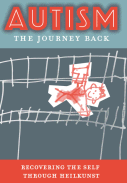

|
FREE Homeopathy at Home, Work and Play downloadable basic study course »  
|
|
Milk: No Longer Recommended or Required

This information does not pertain to real milk, raw milk, which is a phenomenally beneficial food for everyone. A substantial body of scientific evidence raises concerns about health risks from cow’s milk products. These problems relate to the proteins, sugar, fat, and contaminants in dairy products, and the inadequacy of whole cow’s milk for infant nutrition. Health risks from milk consumption are greatest for infants less than one year of age, in whom whole cow’s milk can contribute to deficiencies in several nutrients, including iron, essential fatty acids, and vitamin E. The American Academy of Pediatrics1 recommends that infants under one year of age not receive whole cow’s milk. Cow’s milk products are very low in iron,2 containing only about one-tenth of a milligram (mg) per eight-ounce serving. To get the U.S. Recommended Daily Allowance of 15 mg of iron, an infant would have to drink more than 31 quarts of milk per day. Milk can also cause blood loss from the intestinal tract, which, over time, reduces the body’s iron stores. Researchers speculate that the blood loss may be a reaction to proteins present in milk.3 Pasteurization does not eliminate the problem. Researchers from the University of Iowa recently wrote in the Journal of Pediatrics that “in a large proportion of infants, the feeding of cow milk causes a substantial increase of hemoglobin loss. Some infants are exquisitely sensitive to cow milk and can lose large quantities of blood.”3 Although concerns are greatest for children in the first year of life, there are also health concerns related to milk use among older children and some problems associated with cow’s milk formulas. Milk Proteins and Diabetes Several reports link insulin-dependent diabetes to a specific protein in dairy products. This form of diabetes usually begins in childhood. It is a leading cause of blindness and contributes to heart disease, kidney damage, and amputations due to poor circulation. Studies of various countries show a strong correlation between the use of dairy products and the incidence of diabetes.4 A recent report in the New England Journal of Medicine5 adds substantial support to the long-standing theory that cow’s milk proteins stimulate the production of the antibodies6 which, in turn, destroy the insulin-producing pancreatic cells.7 In the new report, researchers from Canada and Finland found high levels of antibodies to a specific portion of a cow’s milk protein, called bovine serum albumin, in 100 percent of the 142 diabetic children they studied at the time the disease was diagnosed. Non-diabetic children may have such antibodies, but only at much lower levels. Evidence suggests that the combination of a genetic predisposition and cow’s milk exposure is the major cause of the childhood form of diabetes, although there is no way of determining which children are genetically predisposed. Antibodies can apparently form in response to even small quantities of milk products, including infant formulas. Pancreatic cell destruction occurs gradually, especially after infections, which cause the cellular proteins to be exposed to the damage of antibodies. Diabetes becomes evident when 80 to 90 percent of the insulin-producing beta cells are destroyed. Milk proteins are also among the most common causes of food allergies. Often, the cause of the symptoms is not recognized for substantial periods of time. Milk Sugar and Health Problems Many people, particularly those of Asian and African ancestry, are unable to digest the milk sugar, lactose. The result is diarrhea and gas. For those who can digest lactose, its breakdown products are two simple sugars: glucose and galactose. Galactose has been implicated in ovarian cancer8 and cataracts.9,10 Nursing children have active enzymes that break down galactose. As we age, many of us lose much of this capacity. Fat Content Whole milk, cheese, cream, butter, ice cream, sour cream, and all other dairy products aside from skim and non-fat products contain significant amounts of saturated fat, as well as cholesterol, contributing to cardiovascular diseases and certain forms of cancer. The early changes of heart disease have been documented in American teenagers. While children do need a certain amount of fat in their diets, there is no nutritional requirement for cow’s milk fat. On the contrary, cow’s milk is high in saturated fats, but low in the essential fatty acid linoleic acid. Contaminants Milk contains frequent contaminants, from pesticides to drugs. About one-third of milk products have been shown to be contaminated with antibiotic traces. The vitamin D content of milk has been poorly regulated. Recent testing of 42 milk samples found only 12 percent within the expected range of vitamin D content. Testing of ten samples of infant formula revealed seven with more than twice the vitamin D content reported on the label, one of which had more than four times the label amount.11 Vitamin D is toxic in overdose.12 Osteoporosis Dairy products offer a false sense of security to those concerned about osteoporosis. In countries where dairy products are not generally consumed, there is actually less osteoporosis than in the United States. Studies have shown little effect of dairy products on osteoporosis.13 The Harvard Nurses’ Health Study followed 78,000 women for a 12-year period and found that milk did not protect against bone fractures. Indeed, those who drank three glasses of milk per day had more fractures than those who rarely drank milk.14 There are many good sources of calcium. Kale, broccoli, and other green leafy vegetables contain calcium that is readily absorbed by the body. A recent report in the American Journal of Clinical Nutrition found that calcium absorbability was actually higher for kale than for milk, and concluded that “greens such as kale can be considered to be at least as good as milk in terms of their calcium absorbability.”15 Beans are also rich in calcium. Fortified orange juice supplies large amounts of calcium in a palatable form.16 Calcium is only one of many factors that affect the bone. Other factors include hormones, phosphorus, boron, exercise, smoking, alcohol, and drugs.17-20 Protein is also important in calcium balance. Diets that are rich in protein, particularly animal proteins, encourage calcium loss.21-23 Recommendations There is no nutritional requirement for dairy products, and there are serious problems that can result from the proteins, sugar, fat, and contaminants in milk products. Therefore, the following recommendations are offered:
References 1. American Academy of Pediatrics, Committee on Nutrition. The use of whole cow’s milk in infancy. Pediatrics 1992;89:1105-9. 2. Pennington JAT, Church HN. Food values of portions commonly used. New York, Harper and Row, 1989. 3. Ziegler EE, Fomon SJ, Nelson SE, et al. Cow milk feeding in infancy: further observations on blood loss from the gastrointestinal tract. J Pediatr 1990;116:11-8. 4. Scott FW. Cow milk and insulin-dependent diabetes mellitus: is there a relationship? Am J CLin Nutr 1990;51:489-91. 5. Karjalainen J, Martin JM, Knip M, et al. A bovine albumin peptide as a possible trigger of insulin-dependent diabetes mellitus. N Engl J Med 1992;327:302-7. 6. Roberton DM, Paganelli R, Dinwiddie R, Levinsky RJ. Milk antigen absorption in the preterm and term neonate. Arch Dis Child 1982;57:369-72. 7. Bruining GJ, Molenaar J, Tuk CW, Lindeman J, Bruining HA, Marner B. Clinical time-course and characteristics of islet cell cytoplasmatic antibodies in childhood diabetes. Diabetologia 1984;26:24-29. 8. Cramer DW, Willett WC, Bell DA, et al. Galactose consumption and metabolism in relation to the risk of ovarian cancer. Lancet 1989;2:66-71. 9. Simoons FJ. A geographic approach to senile cataracts: possible links with milk consumption, lactase activity, and galactose metabolism. Digestive Diseases and Sciences 1982;27:257-64. 10. Couet C, Jan P, Debry G. Lactose and cataract in humans: a review. J Am Coll Nutr 1991;10:79-86. 11. Holick MF, Shao Q, Liu WW, Chen TC. The vitamin D content of fortified milk and infant formula. New Engl J Med 1992;326:1178-81. 12. Jacobus CH, Holick MF, Shao Q, et al. Hypervitaminosis D associated with drinking milk. New Engl J Med 1992;326:1173-7. 13. Riggs BL, Wahner HW, Melton J, Richelson LS, Judd HL, O’Fallon M. Dietary calcium intake and rates on bone loss in women. J Clin Invest 1987;80:979-82. 14. Feskanich D, Willett WC, Stampfer MJ, Colditz GA. Milk, dietary calcium, and bone fractures in women: a 12-year prospective study. Am J Publ Health 1997;87:992-7. 15. Heaney RP, Weaver CM. Calcium absorption from kale. Am J Clin Nutr 1990;51:656-7. 16. Nicar MJ, Pak CYC. Calcium bioavailability from calcium carbonate and calcium citrate. J Clin Endocrinol Metab 1985;61:391-3. 17. Dawson-Hughes B. Calcium supplementation and bone loss: a review of controlled clinical trials. Am J Clin Nutr 1991;54:274S-80S. 18. Mazess RB, Barden HS. Bone density in premenopausal women: effects of age, dietary intake, physical activity, smoking, and birth control pills. Am J Clin Nutr 1991;53:132-42. 19. Nelson ME, Fisher EC, Dilmanian FA, Dallal GE, Evans WJ. A 1-y walking program and increased dietary calcium in postmenopausal women: efect on bone. Am J Clin Nutr 1991;53:1304-11. 20. Nielsen FH, Hunt CD, Mullen LM, Hunt JR. Effect of dietary boron on mineral, estrogen, and testosterone metabolism in postmenopausal women. FASEB J 1987;1:394-7. 21. Zemel MB. Role of the sulfur-containing amino acids in protein-induced hypercalciuria in men. J Nutr 1981;111:545. 22. Hegsted M. Urinary calcium and calcium balance in young men as affected by level of protein and phosphorus intake. J Nutr 1981;111:553. 23. Marsh AG, Sanchez TV, Mickelsen O, Keiser J, Mayor G. Cortical bone density of adult lacto-ovo-vegetarian and omnivorous women. J Am Dietetic Asso 1980;76:148-51. [ Back to Articles ] [ Top of page ] |